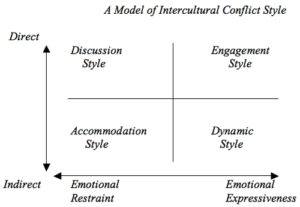Drawing with 2 hands
TOOLBOX GROUP
Group 2 – non subject-specific activities
Group 4 – supporting international mobility
AUDIENCE
a class of pupils from 14 to 18
LEARNING OBJECTIVES
- To be aware of one’s own style of managing conflicts and limits
- To be aware of the diversity of styles
TIME
30 minutes
NECESSARY MATERIALS
- paper sheets (1 for 2 participants)
- pens (1 for 2 participants)
STEP-BY-STEP DESCRIPTION OF THE ACTIVITY
1. Set the room with a line of tables and 2 chairs on each side facing each other.
2. Divide the participants into 2 groups. There should be 2 facilitators, so that each facilitator gives instructions to each group. Make sure both groups are far enough to not hear the instructions of the other group. You can also decide to bring one group outside of the room if it’s more convenient.
3. Give instructions to the groups:
Group 1
They will have to draw a house with doors, windows, clouds and sun. They can choose to add elements, but each of them needs to be round.
Group 2
They will have to draw a house with doors, windows, clouds and sun. They can choose to add elements, but each of them needs to be square.
4. When you are done giving instructions, ask the students to take any chair in front of someone from the other group. Give each pair 1 pen and 1 sheet of paper.
Ask the students to draw in silence while holding the same pen. (5 minutes)
5. When the 5 minutes are over, ask the students to move the tables away and to sit in a circle. You can facilitate a debriefing of the activity:
- What happened?
- How did you feel?
- Why was there a conflict?
- How do you usually react when there is a conflict in real life?
- Do you always react the same way with everybody (friends, family etc.)?
- If I asked you to do this activity again, what would you change?
Here you should discuss what they can learn about themselves, how they usually manage conflicts, and point out the different styles in each groups (see appendix). You should also brainstorm about solutions to conflicts: question the reasons, the roots of the conflict; think of a third person, a “cultural informant” that can try to answer your questions and give you advice; rephrase the situation and express your feelings and your interpretation with the person etc.
RECOMMENDATIONS / TIPS
During the activity, watch carefully the reactions of the students; you can use it later during the debriefing.
If the students decide to draw separately, you can use that during debriefing.
You can choose to speak specifically about conflicts that can happen abroad during mobility (and thus add this question in point 5: How can you react in a situation of conflict when you are abroad?), but this is also a good activity to start a conversation when there is a conflict in the class or the school.
REFERENCES
AFS Vivre Sans Frontière, http://afs.fr/
APPENDIX

Source: The intercultural conflict style inventory, Mitchell Hammer
